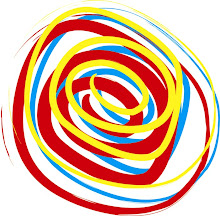 ‘Museums, like asylums and jails, have wards and cells – in other words, neutral rooms called “galleries.” A work of art when placed in a gallery loses its charge, and becomes a portable object or surface disengaged from the outside world. A vacant white room with lights is still a submission to the neutral. Works of art seen in such spaces seem to be going through a kind of convalescence. They are looked upon as so many inanimate invalids, waiting for critics to pronounce them curable or incurable.’
‘Museums, like asylums and jails, have wards and cells – in other words, neutral rooms called “galleries.” A work of art when placed in a gallery loses its charge, and becomes a portable object or surface disengaged from the outside world. A vacant white room with lights is still a submission to the neutral. Works of art seen in such spaces seem to be going through a kind of convalescence. They are looked upon as so many inanimate invalids, waiting for critics to pronounce them curable or incurable.’So wrote the land artist Robert Smithson in 1972. These words cause our minds to wander through galleries we have visited, to re-examine mentally works of art we have encountered; were they invalids in a ward? Though he speaks of the galleries or museums that hold historical works of art, his criticism seems to lie in the neutrality of the spaces in which they are displayed.
 The convention of a white walled gallery is so prevalent that often we do not question it, or ask ourselves what alternative means might be sought for display. A gallery always seems to be a bubble set apart from life itself, a place of hushed tones and reverence, a place which perhaps dampens the impact of the artworks it seeks to preserve and protect. Do the neutral white walls of the New Brewery Arts gallery suck the life from the pieces currently on display?
The convention of a white walled gallery is so prevalent that often we do not question it, or ask ourselves what alternative means might be sought for display. A gallery always seems to be a bubble set apart from life itself, a place of hushed tones and reverence, a place which perhaps dampens the impact of the artworks it seeks to preserve and protect. Do the neutral white walls of the New Brewery Arts gallery suck the life from the pieces currently on display?Though Smithson makes a valid point, it seems to me that it does not apply to the Brewery Arts gallery which, rather than ‘killing’ its objects with its white walls, seems to bring them to life. Natural light spills in from the windows and allows colours to glow and shapes to be defined.
 Unlike many other galleries, it is not entirely cut off from the hustle and bustle of the outside world: the sounds of the café and the shop and the street float through the door. And the gallery is part of a larger complex of active studios inhabited by artists and craftspeople in which we can see works of art and beautiful objects coming into being, having life breathed into them. The works on display are fresh. The surrounding studios remind us of the immediacy of these works’ creation: the paint is almost still wet, the last stitch just done, the last notch just chiselled.
Unlike many other galleries, it is not entirely cut off from the hustle and bustle of the outside world: the sounds of the café and the shop and the street float through the door. And the gallery is part of a larger complex of active studios inhabited by artists and craftspeople in which we can see works of art and beautiful objects coming into being, having life breathed into them. The works on display are fresh. The surrounding studios remind us of the immediacy of these works’ creation: the paint is almost still wet, the last stitch just done, the last notch just chiselled.But, if you do think the pieces in the OPEN Competition are ‘inanimate invalids’, it is up to you to come and ‘pronounce them curable’ by voting in the Public Choice Award.
Ruth Burgon
Image 1 the NBA OPEN exhibition
Image 2 Jorgen Rosengaard's Indian Sommer
Image 3 Mary-Anne Morrison's Peelings

No comments:
Post a Comment